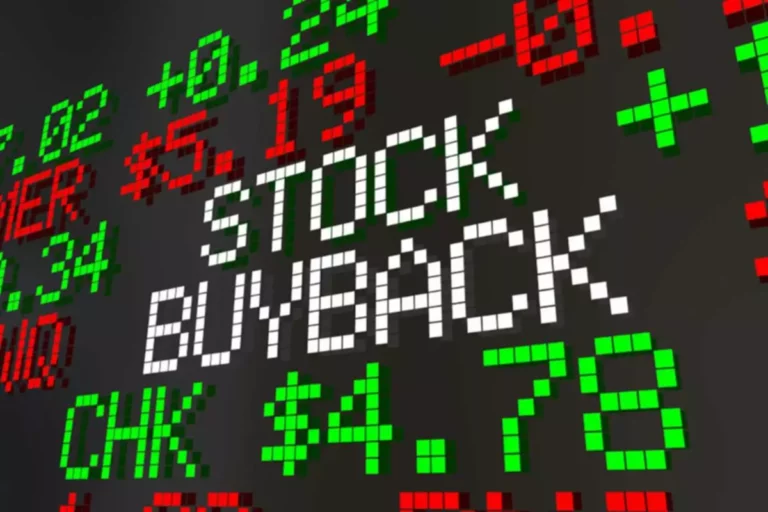Content
The SEC has proposed new rules that require detailed trade reporting in dark pools to enhance market transparency. These regulations aim to address the challenges posed by the opaque nature of dark pool operations and ensure a fairer market environment. Another option involves increasing transparency, whereby dark pools provide more relevant information to regulators,[53] who then make more moderate dark pool trading changes to ensure dark pools and their actors exercise good will. This approach may receive a slightly warmer reception, but regulators may have difficulties in drafting and implementing new policies because there are numerous dark pools, each with its own profile. Using a multitude of methods for different pools may be difficult to enforce or create inequities. Overall, dark pool supporters have two consequentialist arguments in their favor, one of which is moderately strong, while the other is solidly strong.
What is your current financial priority?
These trading venues are called “dark” because of their complete lack of transparency, which benefits the big players but may leave the retail investor at a disadvantage. HFT-powered programs use algorithms-based models to execute trades multiple trades almost instantaneously. Using HFT in daily trading became a common practice for traders, where institutional investors and firms could trade large volumes of securities within milliseconds. Traders raced to gain a https://www.xcritical.com/ fractional advantage by placing market orders before other market participants and capitalising on these opportunities to maximise their gains. Large corporations and investors conduct block trading in dark pools’ stock markets without affecting the public market and the security price. Otherwise, if corporations trade in bulk in open markets, they can severely affect a company’s stock price, causing a significant price increase or decrease.
Electronic Market Maker Dark Pools
The execution process in dark Prime Brokerage pools involves advanced algorithms and sophisticated strategies to complete large trades discreetly and efficiently. Dark pool trading involves a complex mechanism where various order matching methods are utilized. These methods, such as midpoint pegging and volume-weighted average price, are integral to their operations.
What are the criticisms and risks of dark pool trading?

Despite the controversy surrounding dark pools, many institutional investors continue to use them because they offer a number of benefits. For example, dark pools can help prevent market volatility by allowing large trades to be executed without affecting the price of the underlying security. They can also help investors reduce transaction costs by matching buyers and sellers directly, rather than going through a middleman. While dark pools offer some benefits such as reduced market impact, improved liquidity, and increased privacy, there are also potential downsides to consider.
Dark Pool Informational Strategies
So, if a lot of people want to sell a stock, the price goes down, and if a lot of people want to buy, it goes up. They’re private clubs where investors can go to execute trades without the public finding out. They were initially geared to big institutions that wanted to execute a large sale in a dark place, but they’re now used by investors of many different sizes. According to Reuters, “Around 40 percent of all U.S. stock trades, including almost all orders from ‘mom and pop’ investors, now happen ‘off exchange,’ up from around 16 percent six years ago.”
Therefore, in order to avoid excessive market swings and possible manipulation, investment banks and large financial corporations created private exchanges. These closed marketplaces have less transparency to mitigate their impacts on market prices, hence the name of dark pools. Dark pools provide access to liquidity for investors who need to trade large blocks of securities that may not be available on the public market. By matching buyers and sellers privately, dark pools can provide access to liquidity that may not be visible to the broader market. Technological integration guarantees that dark pools work in harmony with the rest of the financial ecosystem. Advanced interfacing technologies and APIs allow dark pools to effortlessly integrate with current trading platforms and public exchanges.
In response to concerns about opacity and potential abuses, regulatory bodies have implemented rules such as pre-trade transparency requirements and post-trade reporting obligations. However, striking the right balance between market efficiency and investor protection remains an ongoing challenge. Overall, dark pools can be a useful trading strategy for investors who need to execute large orders or trade in illiquid securities. However, investors should be aware of the potential drawbacks of dark pools, such as limited transparency and increased risk of fraud, and should carefully consider whether this trading strategy is right for them. These pools can be held by popular exchanges like NYSE, broker-dealer operators, or independent electronic market makers. Significant market players utilise dark pool trading to execute orders without revealing their movements to competitors to minimise the rippling effect on public markets.
The pricing in this approach does not include the NBBO quoting model, so a price discovery is included in the independent electronic dark pools. Therefore, dark pool traders enjoy high liquidity in these types of dark pools when they trade tens or hundreds of thousands of assets and dollars. Credit Suisse CrossFinder is a famous dark pool that uses algorithms in electronic trading systems.
Dark pools are private trading platforms that allow investors to trade securities without revealing their identities or the details of their transactions to the public. While some people argue that this type of trading is necessary to prevent market manipulation and maintain liquidity, others believe that it creates an uneven playing field for investors who lack access to these platforms. There are some concerns about the lack of transparency in dark pools, with critics arguing that it gives an unfair advantage to large investors. However, proponents argue that they provide a way for institutional investors to trade without affecting the market price of the shares they are buying or selling.

Blockchain lets you safely record deals without disclosing particular information early on by using a distributed and unchangeable ledger system. This approach ensures that all transactions are traceable and auditable but does not compromise the privacy of the transaction until execution is complete. Such transparency is crucial not only for regulatory compliance but also for maintaining trust among market participants. Adopting blockchain in dark pools could revolutionize how trade data is managed, making it nearly impossible to alter or falsify without detection. As discussed, dark pools are sometimes referred to as “dark pools of liquidity,” and are a type of alternative trading system used by large institutional investors to which the investing public does not have access.
According to some research, dark pools accounted for 13.75% of the equity volume in the U.S. in December 2022. While some experts believe that they will continue to thrive, others think that increased regulation and technology will limit their growth. Regardless of what happens, it is clear that dark pools will remain an important part of the financial markets for the foreseeable future.
- The regulatory authority overseeing dark pools includes the Securities and Exchange Commission (SEC) and the Financial Industry Regulatory Authority (FINRA).
- Institutional investors who execute large trades frequently may find dark pools to be more beneficial due to lower transaction costs and reduced market impact.
- By staying informed about these developments, market participants can navigate the complexities of dark pool trading effectively.
- Therefore, in order to avoid excessive market swings and possible manipulation, investment banks and large financial corporations created private exchanges.
- Share prices on open markets may not reflect true supply and demand due to dark pool operations, distorting the price discovery process.
In this section, we will delve into the conclusion of our exploration, drawing insights from different points of view to shed light on the intricacies of this opaque market. In the 1990s, HFT became so pervasive that it grew increasingly difficult to execute large trades through a single exchange. Because large HFT orders had to be spread out amongst multiple exchanges, the transactions inadvertently alerted trading competitors. Trading competitors would try to get in front of each other, racing to become the first place the order; this had the effect of driving up share prices.
Thus, those who are on the side with more orders may not be able to get their orders filled.[47] Dark pools’ algorithms remain confusing and it is difficult to quantitatively measure their performance. Many other worries about potential harms and abuse stem from anonymity and novelty issues, since both make it difficult to know if dark pools are truly good or bad. One of the most significant criticisms of dark pools is the loss of price discovery. Factors such as supply, demand, participants’ willingness to trade, past information, and other external events affect these prices. Public exchanges have not improved technology to the point where they experience fewer flash crashes than dark pools. Due to the non-private nature of public exchanges, this lack of progress is likely to remain the case in the future.
Dark pools are also called “dark liquidity” pools because they allow investors to buy or sell large blocks of securities without affecting the market price. Dark pools caught the eye of lawmakers after the $20 billion collapse of investment firm Archegos Capital Management rattled markets in April. That said, the lack of transparency has drawbacks, as dark pools remain vulnerable to predatory practices such as high-frequency front-running traders or information leakage.
